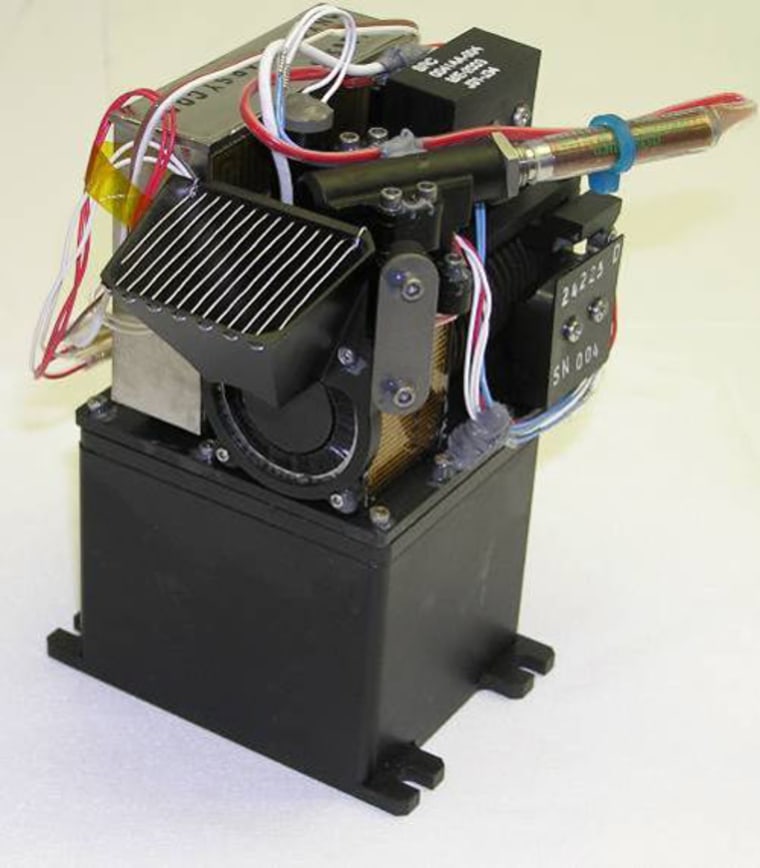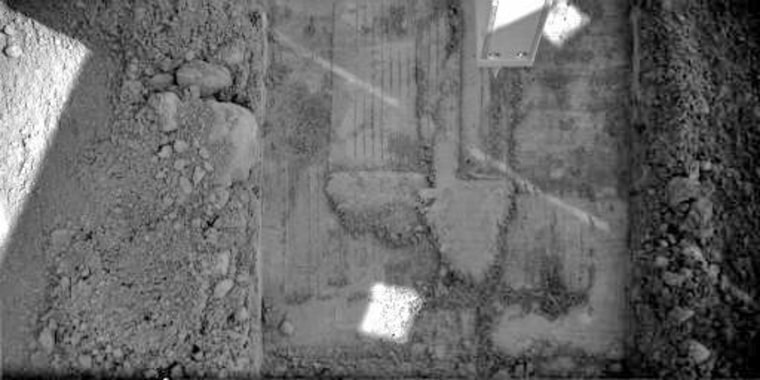NASA's Phoenix Mars Lander delivered a second sample of Martian dirt to its onboard wet chemistry laboratory, NASA officials said Monday.
Data beamed back to Earth on Sunday night confirmed that Phoenix's robotic arm had successfully delivered the sample to the instrument, which tests the composition of the dirt by mixing it with water in one of four teacup-sized beakers.
Results from testing this sample will be compared to results from the first sample analyzed by the wet chemistry laboratory two weeks ago. That laboratory is part of Phoenix's Microscopy, Electrochemistry and Conductivity Analyzer.
The results for the first wet chemistry test suggested that the Martian regolith contained several soluble minerals necessary for life, including potassium, magnesium and chloride.
The main activity on the lander's schedule for Monday was testing a method for scraping up a sample of icy material and getting it into the scoop at the end of the robotic arm. On June 26, Phoenix scraped down to the subsurface icy layer in the "Wonderland" digging area and used a rasp to shave off some samples for later testing, but no material was actually in the scoop.

Phoenix will take images before, during and after testing the sample scooping method to evaluate how well it works. If the test goes well, the science team plans to use this method for gathering the next sample to be delivered to the lander's Thermal and Evolved-Gas Analyzer, which bakes samples and analyzes the vapors they give off.
A short circuit last month in one of TEGA's ovens could happen again when the instrument is turned back on, so Phoenix mission scientists will treat the next TEGA sample delivery as if it will be the last.
The $420 million mission landed on May 25 and is expected to operate for about three months (90 Martian days).
